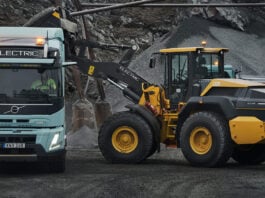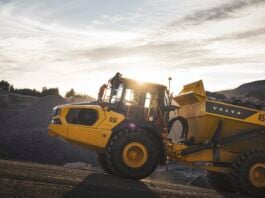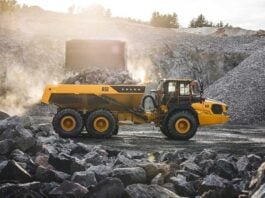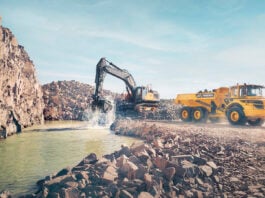Designing machinery to have a lower carbon footprint is becoming increasingly important. Niklas Nillroth, Vice President Environment & Sustainability at Volvo Construction Equipment tells us how we must have high ambitions and be clear about the objectives when it comes to building more sustainably.
Reducing our environmental impact needs to start at the very beginning of the design process. Limiting our environmental footprint means considering everything from the material of the product and every single substance within that material, right through to how that product is going to be used.
The greatest environmental impact of construction equipment occurs in the use phase – not during its manufacturing – which is why it is so important to design products to be fuel efficient. Not only will this lower CO2 emissions, but it will have a dramatic impact on reducing operational costs. It is also triggering demand for new energy sources, such as electrical machinery, especially from large customers who want to see more sustainable and cost-effective products. Manufacturers need to keep up with this change in demand and be prepared for a shift into new products.
CHANGING PRODUCTION
The future of machine manufacturing might not be straightforward because current production of ‘traditional’ machines is not going to stop overnight. It is likely that the production of machines with current engines will continue for many years, in parallel with the production of new more sustainable machines. This will mean a far higher complexity in production.
However, there are other possibilities to design more sustainable machines that keep production simple. One of these is the use of alternative fuels, such as bio diesel, which reduces CO2 emissions without changing the manufacturing process too drastically.
DRIVING THE DEMAND
Legislation is driving production and is an important factor to consider, but for Volvo CE it is even more important to have products on the market that are designed for the use of the customer and aligned with their business requirements. Legislation is something that of course we will fulfil, but our aims go beyond these rules and regulations. More and more key customers are demanding higher performance and greener machinery.
Customers are trying to engage all parts of the value chain and challenge their suppliers’ ambitions for CO2 reduction. Many are following the example of successful projects, such as Anglian Water’s 60% carbon footprint reduction in the UK, which highlights that high ambition coupled with clear objectives can have a huge impact.
From Volvo CE’s perspectives, it’s important to understand the requirements and be part of the conversation with customers, developers and governmental institutions who are putting the legislation in place for the future. Volvo CE facilitates discussion and action by hosting events like the Construction Climate Challenge (CCC) summit – which was held in Gothenburg this June – by bringing together the key industrial players in the field of sustainability. The summit supports applied research that can be utilized within the wider industry.
CHANGING MINDSETS
While it’s best not to focus on the hurdles and the obstacles, we cannot ignore that they exist. The major challenge in moving towards more sustainable design is how to change mindsets. We all need to think differently. The technology is already here and is moving quickly, so how do we use that technology to change our behavior and way of working to keep up with this shifting technology landscape. That is our biggest challenge.
Things are changing. Every year the CCC summit grows and we are seeing new and engaged stakeholders joining our collaboration. The industry is going in the right direction but there are several other actors and stakeholders who need to be proactive. One of the best methods of persuasion is fact. Facts and research need to be put in the spotlight and good examples need to be highlighted that show this kind of development is not only good for the environment but also good for the pocket.
A LOOK INTO THE FUTURE
Different studies in the area of sustainability highlight that value chain collaboration is essential if one wants to succeed. This is different to historic industry development. To be able to achieve the Paris Agreement ambition to stay below 2°C of global warming we need to think differently. We need to work together to succeed.
This movement is happening. We see rapid development in the field of electric vehicles, connectivity and autonomous vehicles. Volvo CE’s target is to learn, be part of this development and build confidence. But, in terms of electrical and autonomous machines Volvo CE is still in the research and development phase but we are making inroads in new technologies. We need to learn and be part of further development and we need to build confidence both with our customers and within our value chain. Only then can we make a difference in the field of sustainable design.





![[Video] Volvo CE’s Electric Machines at Work in Sweden’s Largest Sustainable Project](https://www.heavyquipmag.com/wp-content/uploads/2024/12/volvo-1-265x198.jpg)




 Copyright 2025 All rights reserved.
Copyright 2025 All rights reserved.